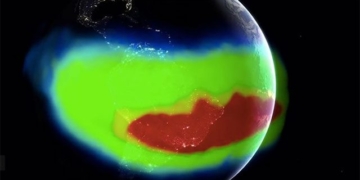The United States successfully launched the Geostationary Operational Environmental Satellite (GOES) into orbit using a Delta rocket on May 24 from Cape Canaveral Space Force Station after 15 months of preparation.
The satellite, named GOES-13, is the first of its kind capable of observing, collecting, and transmitting data about Earth even when it is obscured from sunlight, thanks to its solar power system.
Additionally, GOES-13 is equipped with technology to analyze the moisture levels of storms using acoustic waves, a feature that older generation satellites lack.
The primary missions of GOES-13 include: monitoring storms and hazardous weather patterns, recording solar storms, and more.
GOES-13 is the first satellite in a series of three next-generation geostationary weather satellites produced by the United States. The other two satellites are scheduled for launch in the coming years.
The National Oceanic and Atmospheric Administration (NOAA) will utilize data from GOES-13 to forecast weather for North America and the Northern Hemisphere.
Positioned at an altitude of approximately 35,000 kilometers (22,300 miles) along the equator, the satellite will undergo a six-month testing phase to ensure the functionality of its equipment. After this period, the satellite will maintain a stable orbit and altitude until it is replaced by another satellite.
The satellite’s launch had previously been delayed due to technical issues with the rocket and satellite, as well as a strike by the technical team.
With the Atlantic hurricane season approaching in early June, meteorologists are pleased to see GOES-13 operational.
Tran Nam




















































